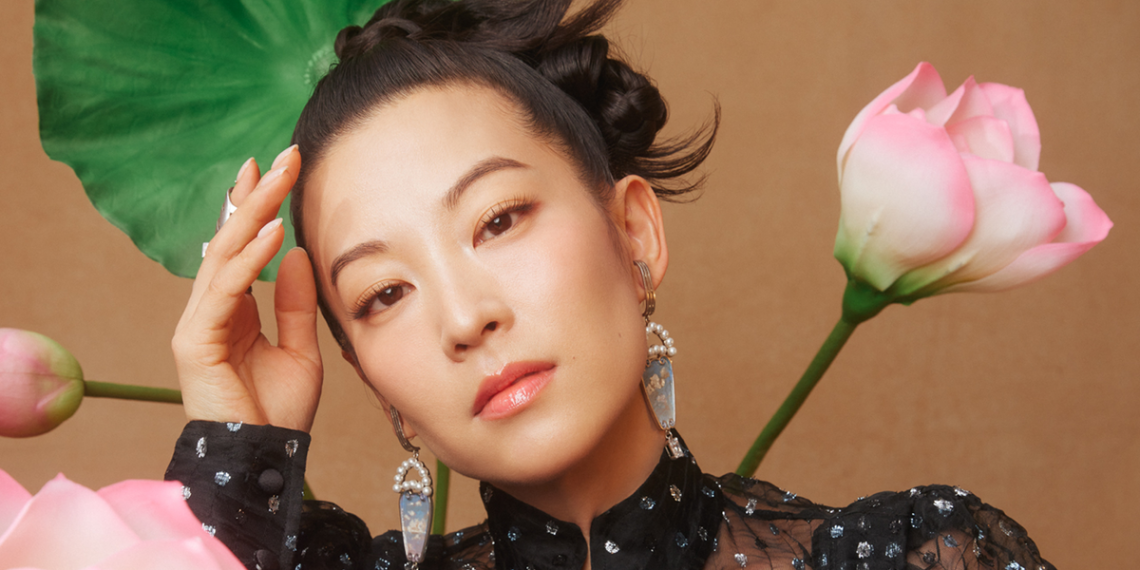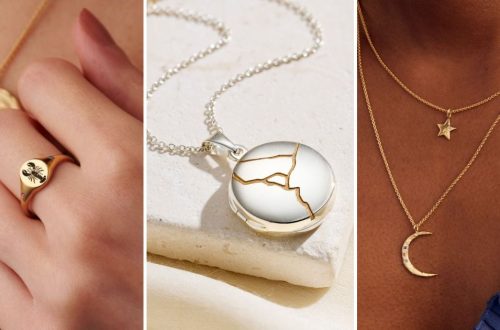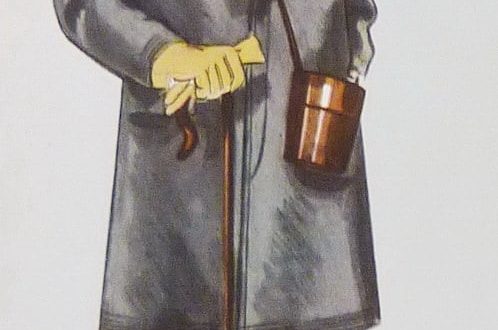
When photographer Lenne Chai envisions a royal court, it isn’t white kings or queens that sit on the throne. It’s Arden Cho. Chai befriended the Korean American actress—and her similarly majestic dog Chewy—a few months ago and immediately began conceptualizing a shoot with Cho cast as a Korean monarch. The result is a beautiful subversion of traditional royal portraits (unlike the recent painting of King Charles). There is no ballgown but a hanbok—a traditional Korean dress—that floats like a cloud. Cho’s hair is plaited into a modernized Eon’jeun Meori style where a braided bun rests on the top of the head. The set has a backdrop of rice paper-esque burlap, a throne-like chair of hand-carved wood, and lotus flowers as a nod to traditional Eastern portraits.


I was introduced to Chai’s photography through her Singaporean wedding series, which imagined a fantasy same-sex marriage in her “dystopian homeland,” where such marriages remain unrecognized. (In 2019, when the series was published, homosexuality was still criminalized in Singapore.) I’m queer. I’m Asian. I love the photos. I love their glossy gaze, like when you have Vaseline on your eyes or wake up from a very long dream with oily eyelids. They’re gorgeous. Deeply influenced by director Wong Kar-wai, Chai imbues her images with a similar romantic haze as seen in his film In the Mood for Love, but gay.
Below, Chai talks to Coveteur about visually rethinking royalty, why she had to leave her home country to question its cultural norms, and a dim-sum recommendation from an unlikely source.


Rosa Jisoo Pyo: How did you become a photographer and why?
LC: “I’ve always seen photography as just a medium for me to communicate my ideas in, so I don’t know if I’ve thought that much specifically about what kind of photography I’m doing, per se. But I did start in photojournalism when I was 19. I was an intern at a local newspaper. I’ve always had fashion aspirations and [a fascination with] the fashion industry since I was a wee child. Maybe the photojournalism training from the start has influenced me to try to have something to say with my photography. Regardless of whether it’s fashion or commercials or celebrity, I try to have something interesting to say or interesting observations to make through that work.”
Tell me about your relationship with Arden Cho—how did that relationship shape your vision for this photo shoot?
LC: “I met Arden on a shoot we did for a brand from Singapore called Love Bonito earlier this year. We hit it off, so after the shoot, we went to grab a meal together, and she brought her dog Chewy along. Chewy sat by me the whole meal, and I felt very honored. Chewy is a Pekingese-Shih Tzu. So the whole time, I was thinking about the relationship that royalty has had with dogs and how this particular breed of Shih Tzu was actually bred to be royal companions. That got me thinking about making a royal portrait with Arden and Chewy, so that’s how this came about.”
How did it go working with Chewy on set?
LC: “Chewy was very regal. Chewy delivered. Chewy ate. I know Arden was kind of worried that Chewy [would] not be able to commit, but Chewy was very professional and a top model, truly. Of course, behind the camera were five people waving things at Chewy and being like, ‘Look here, Chewy! You can do it!’’


Why did telling the story of Asian royalty and their dogs captivate you? And what about Arden made you think about Asian royalty and that type of grandeur?
LC: “I think if anyone looks like a Korean princess in my head, it’s Arden. She looks very regal. We had a conversation where she talked about how she would like to do more shoots that felt true to her heritage. So that was also very much a starting point. At first, we considered doing this shoot like a traditional European-styled painting, but after doing some more research, I realized that even in the Joseon Era [the last imperial dynasty of Korea, founded in 1392], they had a lot of paintings of pet dogs and pet cats and portraits with the dogs. I was also looking at traditional Chinese paintings—specifically, ancestral portraits, and the visual elements that you see in all these portraits: the very ornate chair, the rug, and even the textured backdrop. We chose burlap to be the background of our shoot [because] it felt a lot like rice paper, which is what these portraits were traditionally painted on.”
You use your photography as a visual language to create these alternative universes, especially for Asian people. What story are you trying to subvert or tell through this shoot with Arden?
LC: “There are a lot of photo shoots, especially in the realm of fashion, that are inspired by the European traditional painting aesthetic. The typical visual language of fashion photography is inspired by old master paintings. It was great to work with Arden on this because I had a good reason to explore through an Asian lens, even though [Korean ancestral culture] is a culture that I’m not as familiar with. For example, I learned about how Confucianism was the biggest driver in the Joseon era, [a time in which women’s rights were heavily restricted in Korea]. As someone who grew up Chinese, that was really shocking to discover because I have always known him growing up as the philosopher guy that my parents quote sometimes. Discovering this huge impact he had on how patriarchal Joseon society became was truly educational and mind-blowing for me.”
When I went to Korea for the first time, I didn’t realize how deeply the Buddhist and Confucian values were ingrained in supporting patriarchal values. Confucianism considers how you look on the outside to be a reflection of your inside, which is deeply reflective of Korean culture’s current beauty standard.
LC: “I wouldn’t have explored pointing my lens at such Asian things if not for the fact that I grew up in Asia and then migrated [to the US] as an adult. If I lived in Singapore, I wouldn’t question any of these [patriarchal values]; I would have just treated them as the norm. My parents are also very Catholic. It’s very Christian back home. Living in New York and seeing how normal it is to be married as a queer person sparked the inspiration for [my Singaporean wedding] shoot. It was challenging all these traditional values I had grown up with, so I feel it’s definitely an East Meets West kind of perspective.”


Was that something you were trying to bring to this shoot, your East meets West perspective?
LC: “We could have gone in a very European direction, which would have been the norm for the style of fashion shoot we were doing, but it was a fun opportunity to explore a more Asian side of [royalty]. We’re in LA, and I don’t have access to the type of Asian props or even settings that I’m used to back home. That directly impacted how the shoot shaped up as well.”
When you both had that dinner after your first shoot together, did you talk about the cultural values and struggles of Asian people in America working in creative fields that are very white?
LC: “I don’t remember if we had that conversation; maybe it came up, but what I do remember is talking about where to eat—a very big Asian conversation. We definitely traded restaurant and food recommendations. It’s been easy to strike up a friendship with Arden because of shared experiences.”
What did she recommend?
LC: “I grew up in Singapore my whole life, but I never knew about Lei Garden, which is this dim-sum restaurant in this really fancy strip mall in Singapore. Her recommendation was bomb. I can’t believe I grew up there and didn’t know about this, and then Arden in LA is the one who recommended it to me?”
Style Editor: Camille Freestone / Art Director: Smiley Stevens / Managing Editor: Hilary George-Parkin / Casting Director: Yasmin Coutinho / Executive Producer: Marc Duron / Studio: EDGE Studios
Want more stories like this?
Rich Eccentric by Day, Vigilante by Night
Is Black the Most Fashionable Color?
More Than a Muse





